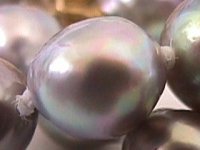Z
Zeide Erskine
Guest
Hi Cam,
That can be done, yes. It helps to keep a written record of which is which. Chances are, that showing one of those strands to customers might harm your South Sea and akoya sales, though.
Zeide
That can be done, yes. It helps to keep a written record of which is which. Chances are, that showing one of those strands to customers might harm your South Sea and akoya sales, though.
Zeide



